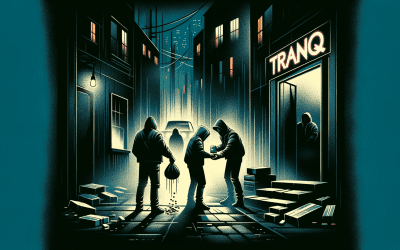Your first panic attack is usually a frightening experience. You may suddenly feel the symptoms of a heart attack — chest pains, labored breathing, and your fight or flight response may activate. After your panic attack has subsided, you may not even be sure what happened. This could leave you unprepared for your next panic attack, which will only make the situation worse.
That’s why we’re here. In this guide to panic attacks, also known as anxiety attacks, we will answer all of your questions about this common issue.
What Are Panic Attacks?
At its core, a panic attack is a feeling of intense panic or fear that does not have a clear or reasonable cause. However, there are often more symptoms than just a feeling of terror. For many, anxiety attacks also manifest the following symptoms:
- Chest pain
- Labored breathing
- A sense of impending doom
- Increased heart rate
- Sweating
- Shaking
- Hot flashes
- Dizziness
- Nausea
- Headache
- A feeling of separation from reality
As you might imagine, unexpected panic attacks are often frightening. They can come on for seemingly no reason, although they are often tied to stress. For example, you might have a stressful period at work where you feel anxious or worried throughout your day. Later, you might be sitting at home when you feel a panic attack coming on. While you might not feel stressed at that time, your mind will still be working through your stressors, which can lead to a panic attack.
The above scenario is very common, and for most people, they’ll only experience a small number of panic attacks (if any) throughout their lifetime. However, for people with certain mental health conditions, panic attacks may become a fact of life.
Contact us today to take your first step towards recovery.
Why Do I Have Panic Attacks?
If you’ve only recently had your first or second panic attack, then you may not be suffering from a mental health condition. These things routinely happen to people going through stressful periods. However, if there isn’t a clear, reasonable trigger for your stress, or your anxiety attacks are chronic, a mental illness could be the cause.
While panic attacks can be related to various mental illnesses (such as depression, anxiety disorders, bipolar disorder, etc.), anyone who regularly has anxiety attacks is living with a panic disorder. A panic disorder is a type of anxiety disorder, characterized by its frequent panic attacks. Because panic attacks and panic disorder go hand in hand, the symptoms of panic disorder are the same as the symptoms for a panic attack. However, you can only have a panic disorder if your stress cannot be rationally explained or is not linked to a specific cause.
Like other anxiety disorders, a panic disorder should be treated by mental health professionals. Sadly, though, this is not always helpful advice when you’re in the throes of a panic attack. While you should immediately seek mental health treatment if you are suffering from panic disorder, we have tips that may help ease the mental and physical symptoms of your next anxiety attack.
How Do I Stop a Panic Attack?
When you’re at the onset of an anxiety attack, your first instinct is to, as the name implies, panic. However, there are several strategies you can employ to calm yourself down and remain in control.
First, try a deep breathing exercise called square breathing. This simple breathing pattern asks you to:
- take a deep breath for four seconds
- hold that breath for four seconds
- exhale for four seconds
- hold that your breath for another four seconds
- repeat the process until you have calmed down

This process works by stopping your body’s physical panic response. When an anxiety attack hits, your breathing will likely quicken and your heart rate will be elevated. Square breathing allows you to consciously slow down the physical symptoms of anxiety, which in turn calms down your mind and puts you back in the metaphorical driver’s seat.
Alternatively, or as an addition to square breathing, you might try a relaxation technique called applied relaxation. When you panic, you’re probably unconsciously clenching your muscles. This is another form of physical response that can worsen your feelings of anxiety. Applied relaxation is a process in which you slowly and deliberately relax each part of your body.
Typically, you will start with your feet, making sure that you’ve released all tension, then work your way up to your legs, torso, hands, arms, shoulders, etc., until you are completely relaxed. Similarly to square breathing, this technique helps you regain control of your body, which then makes it easier to calm down and control your emotions.
Of course, these strategies are just temporary measures to help get you through your next anxiety attack. If you’re suffering from a panic disorder, it’s important that you seek professional mental health treatment as soon as possible.
Do I Need Treatment for Panic Attacks?
If you’re suffering from a panic disorder, then mental health treatment could greatly improve your quality of life. A quality mental health program will help you address the underlying causes of your mental health issues. In this way, you will be able to restore your mental health and go back to leading a healthy lifestyle.
It can be hard to believe, but you are never far from mental health treatment. Wherever you are in recovery or in your life, there are always people who are ready to help. If you’re seeking panic attack treatment, then fill out this contact form or call The Blackberry Center’s admissions specialists at (813) 908-4199.



